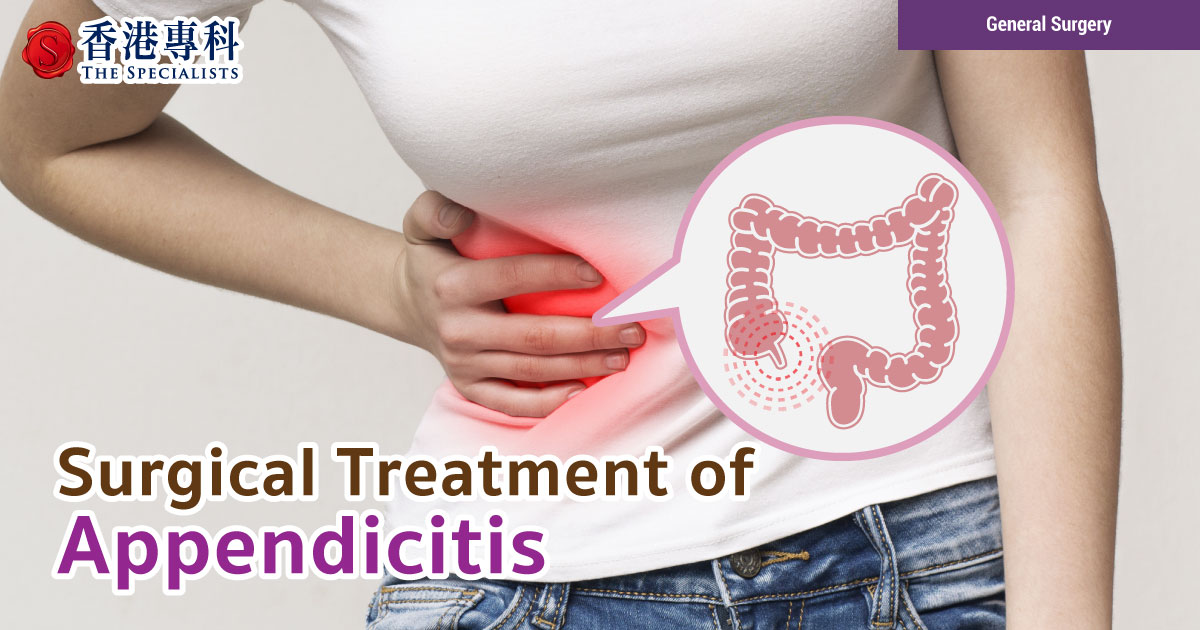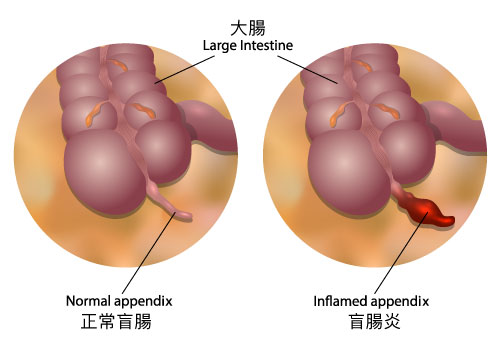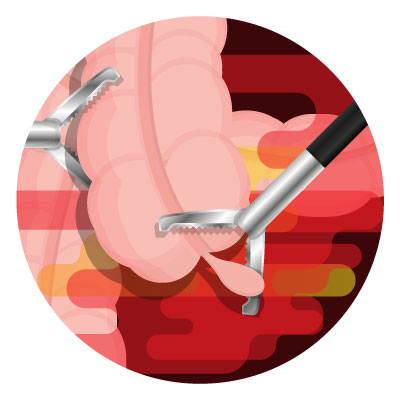Surgical Treatment of Appendicitis

What causes appendicitis?
Appendicitis is a condition in which the appendix becomes inflamed, swollen, or infected, caused by various infections such as virus, or bacteria in the digestive tract. The appendix is a thin tube sitting near the junction of the small intestine and large intestine. The function of the appendix is unknown. Appendicitis may lead to the sudden pain that begins on the right side of the lower abdomen. It is common to see both the acute appendicitis and chronic appendicitis occur. Acute appendicitis requires immediate treatment.

Delaying an appendectomy leads to worse outcomes
If the inflammation and infection spread through the wall of the appendix, the appendix can rupture. After rupture, infection can spread throughout the abdomen or become confined to an area surrounding the appendix forming an abscess, both of which can lead to life-threatening generalized infection.
Emergency of appendicitis is not just abdominal pain
Acute appendicitis is one of the commonest causes of acute abdominal pains. Patients may experience a sudden pain that begins around the navel and often shifts to the lower right abdomen. Pain that worsens when coughing, walking or making other jarring movements. Appendicitis can cause nausea and vomiting. The patient will usually have a gradual onset of dull, cramping, or aching pain throughout the abdomen. He or she can lose the appetite and have a mild to moderate fever.
How to diagnose appendicitis?
Diagnosis is based on history of symptoms and physical examination backed by blood tests. Atypical histories and equivocal physical signs may require a period of observation with serial reassessment and/or further investigations with X-rays, ultrasound, and CT scanning.
Laparoscopic/Minimal access surgery approach
Nowadays this is often the operation of choice, performed using one to three small incisions with a camera to visualize the abdominal cavity. In general, a small incision is made around the belly-button and the abdomen is inflated with carbon dioxide. A laparoscopic camera is inserted to visualize the abdominal cavity. Laparoscopic instruments are then inserted via two small wounds to remove the appendix.

Open Appendectomy
This is a traditional operation. If the findings reveal severe infection with complications such as appendix rupture, abscess, extensive abdominal adhesions, conversion to conventional open operation may be necessary. The surgery requires a single larger right-sided abdominal incision.
Care after surgery
The patient usually has to continue fasting during the first day after surgery. Diet may gradually be resumed over the next few days depending on the severity of the appendicitis and recovery of the gut function. Painkillers in the form of oral tablets/syrups, rectal suppositories or injections are prescribed according to the extent of surgery.
*The above information is for reference only, please consult your doctor for detail.

 3405 8288
3405 8288
